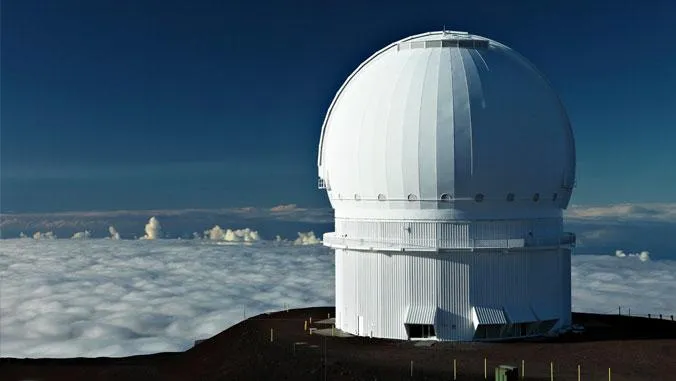Astronomers have discovered what our neighbour galaxy Andromeda last had for lunch. Like the Milky Way, Andromeda has been snacking on dwarf galaxies for billions of years. Now recent observations, taken by several telescopes on Mauna Kea in Hawaii, have exposed the stellar left-overs of the galaxy’s previous meals.
“By tracing the faint remains of these smaller galaxies with embedded star clusters, we’ve been able to recreate the way Andromeda drew them in and ultimately enveloped them at different times,” says Dougal Mackey from the Australian National University who co-led the study along with Geraint Lewis from the University of Sydney.
These traces show that Andromeda was feeding from its plane of satellite galaxies, at right angles to the remnants previously known about. This surprised astronomers, as the plane is so fragile it should be torn apart by Andromeda’s gravity within a billion years or so, yet the galaxy appears to have been feeding from it for at least 10-billion-years.
However, these dwarf galaxies are only an appetiser. The main course is due to arrive when Andromeda and our own Milky Way collide and devour each other to become one giant galaxy. Find out more about this in our guide to the Andromeda-Milky Way collision.
“The Milky Way is on a collision course with Andromeda in about four billion years, so knowing what kind of a monster our galaxy is up against is useful in finding out its ultimate fate,” says Mackey.

As well as revealing our Galaxy’s future, studying Andromeda could also reveal its past. As well as being close enough to give us a great view, Andromeda is remarkably similar to the Milky Way, though it is somewhat larger.
“One of our main motivations in studying astronomy is to understand our place in the universe. A way of learning about our Galaxy is to study others that are similar to it and try to understand how these systems formed and evolved,” says Mackey.
“Sometimes this can actually be easier than looking at the Milky Way, because we live inside it and that can make certain types of observations quite difficult.”
"We are cosmic archaeologists, except we are diffing through the fossils of long-dead galaxies rather than human history," says Lewis.
Want to see it for yourself? Read our guide on how to see the Andromeda Galaxy.
